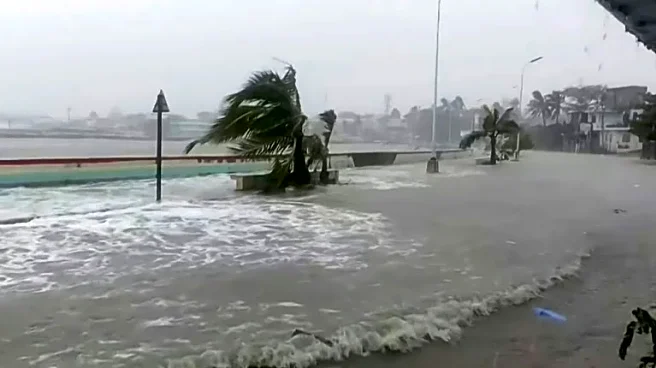What's Happening?
Typhoon Fung-wong has intensified into a super typhoon and made landfall in the Philippines, prompting the evacuation of over 900,000 residents. The storm is characterized by sustained winds of 185 km/h
and gusts reaching 230 km/h. The BBC reports widespread debris and residents seeking shelter in sturdy buildings on Luzon Island. The typhoon's impact is expected to cause significant damage, including flooding and landslides, across affected regions.
Why It's Important?
The arrival of Typhoon Fung-wong poses a severe threat to the Philippines, a nation frequently impacted by tropical storms due to its location along the Pacific typhoon belt. The evacuation of nearly a million people underscores the potential for widespread destruction and humanitarian challenges. The storm's impact could strain local resources and necessitate international aid and support, affecting economic stability and recovery efforts in the region.
What's Next?
Authorities are likely to focus on rescue and relief operations, prioritizing the safety and well-being of affected populations. International aid organizations may mobilize to provide assistance, while local governments assess the damage and begin recovery efforts. The storm's aftermath could lead to discussions on improving infrastructure and disaster preparedness in vulnerable areas.
Beyond the Headlines
The increasing intensity of storms like Fung-wong may be linked to climate change, prompting further examination of environmental policies and sustainable development practices. Long-term strategies to mitigate the impact of such natural disasters could become a focal point for regional cooperation.













